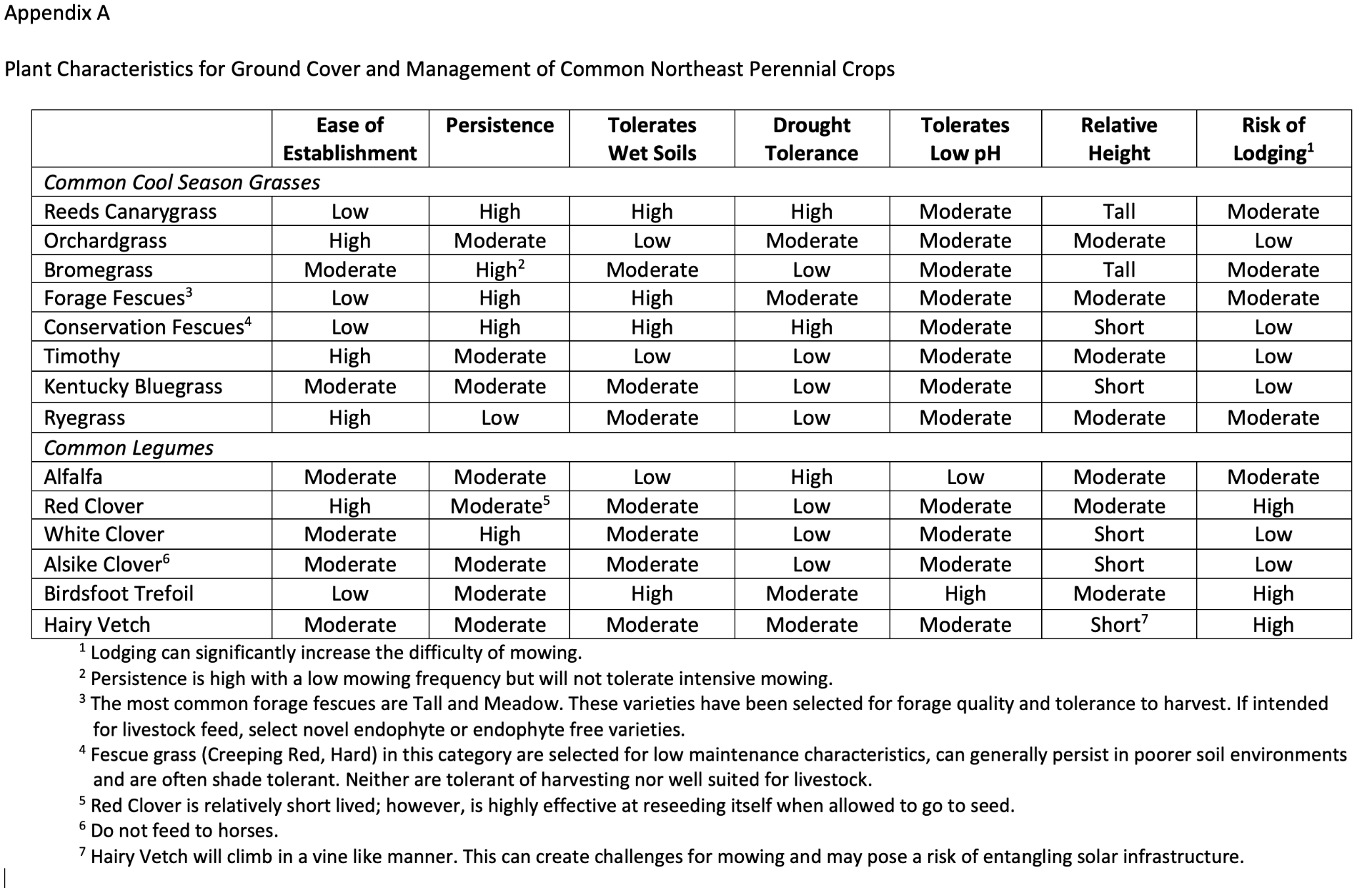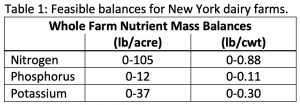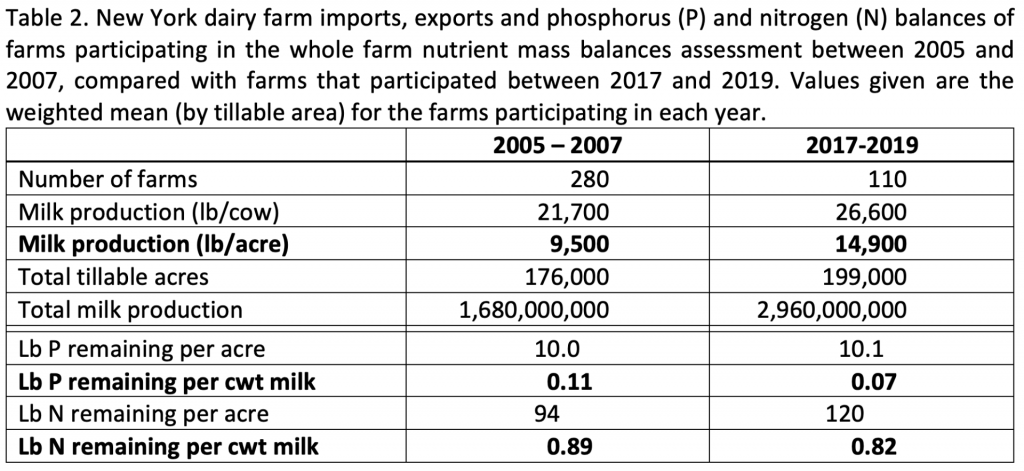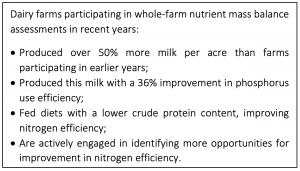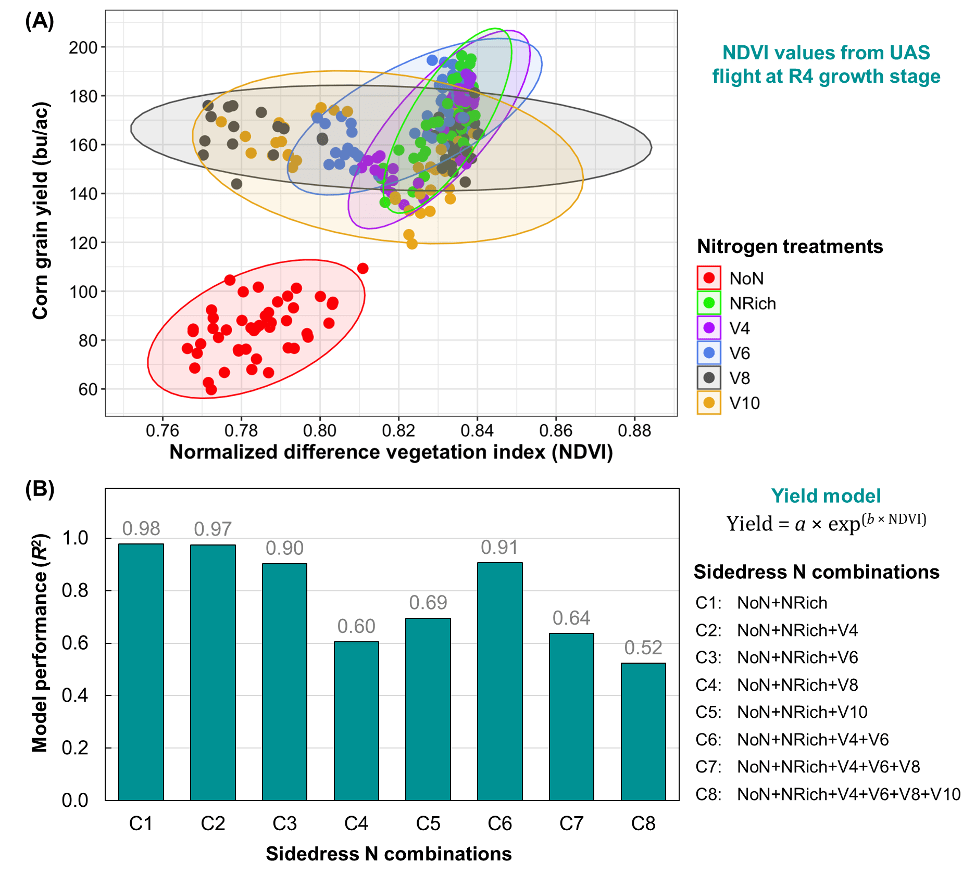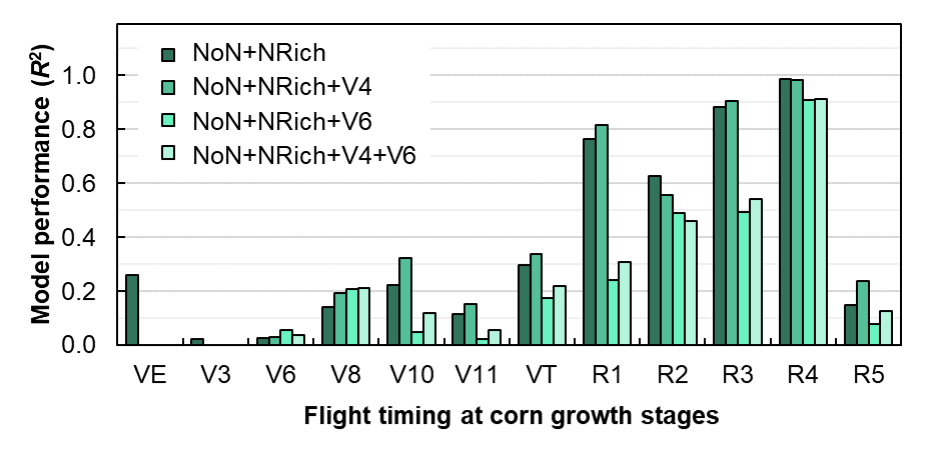By Joe Lawrence, PRO-DAIRY Forage Systems Specialist and the CCE Ag-Solar Program Work Team
Proper planning for the use of land within a solar array is critical to a successful project. Options exist from very low maintenance management of ground cover to more intensive agricultural production systems. Even with low maintenance systems, pre-planning has numerous benefits for the landowner, project operator and environment. Benefits can include protecting the soil, improved pollinator habitat and livestock (primarily sheep) grazing performance and reduced maintenance cost for the solar operator.
In observing recent installations of solar arrays, the pre-construction field conditions vary greatly. It is apparent that planning for desired vegetative cover post-construction needs to start when the site is selected and implemented in conjunction with the construction of the solar array. This article will cover considerations for the successful establishment and maintenance of perennial ground cover options. The information is presented from the perspective of the Northeastern United States but may have applicability to other regions.
Existing Site Conditions
Managed Agricultural Land
Perennial Forage – When the proposed solar array location is in a perennial hay or pasture setting with good management, it is likely that less work will be needed but it still depends on desired outcomes after the project.
- How will the site be managed post-construction?
- Are the plant species present conducive to mowing?
- Some forage species may become hard to manage if mowing frequency is low.
- Are the species present desirable for sheep grazing?
- Fields heavy in legumes may be too “rich” for some livestock.
- Are the species present desirable for pollinators?
- Several forage crops can serve as food for pollinators but may not provide the optimum selection.
- Are the plant species present conducive to mowing?
Row Crops – a row crop field offers a clean slate for establishing perennial cover under the panels; however, can also create challenges with weeds. Row crop fields can contain significant weed seed banks which can present significant challenges when left unchecked as these weeds can take a foothold.
-
- Annual weeds- allowing annual weeds to establish and produce seed during the planning and construction process can lead to significant increases in the weed seed bank and create weed management challenges for years to come.
- Perennial weeds – perennial weeds tend to be very hardy, once established, and allowing them to establish during the planning and construction process will require a significant effort to permanently remove them.
Un-Managed or Idle Agricultural Land
Solar development is encouraged on marginal or idle agricultural land, in these scenarios significant encroachment of undesirable plants may have already occurred. Again, the post-construction management plan will impact how this is evaluated but the following should be considered.
-
- Is existing vegetation considered invasive or pose other challenges to site management?
- Invasive species or undesirable aggressive species should be managed prior to construction.
- Will the existing vegetation cause challenges for mowing?
- Will the growth habits of the existing vegetation interfere with solar infrastructure?
- Is existing vegetation toxic or otherwise not palatable to livestock?
- Are herbicide tolerant weeds present?
- These should not be permitted to go to seed.
- Resource: Restoring Perennial Hay Fields, Agronomy Factsheet #109
Pre-Construction Actions
In many cases management of undesirable plants will face less hurdles before the construction of the solar array.
Control Existing Vegetation
-
- Mowing – if time permits prior to the start of construction, frequent mowing can reduce the presence of some weed species and encourage the growth of more desirable species.
- Herbicides – Herbicides can be an effective control option for undesirable plant species. Care must be taken to assure that products are used in accordance with their label and steps are taken to avoid herbicide resistance development.
- Tillage – tillage can effectively terminate numerous types of plants but may not be successful in controlling species with creeping root systems or the ability to regrow from existing plant parts.
*Note: Tillage may lead to additional germination from the soil seed bank so planning should include follow-up measures to control newly emerged weeds after initial tillage.
-
- Resource: Weed Control in Grass Hay
Establishment of New Vegetation
-
- Standard practices of solar installation limit the impact on current ground cover, though conditions such as excessive rainfall during construction can increase soil disturbance. In cases where complete renovation of the vegetation is needed, it may be much more feasible to complete this prior to construction. Followed by necessary repairs after construction.
- Prepare a proper seedbed / use appropriate equipment (seed to soil contact is critical for germination and establishment. Resource: Grass Seeding and Establishment
- No-till – If the field conditions are smooth a properly set up no-till drill can provide a successful establishment without the need for tillage. Some control of existing vegetation may be necessary to allow newly seeded plants to establish.
- Broadcast seeding
- Existing Stand – success is marginal as proper seed to soil contact is variable.
- Note: frost seeding is the practice of broadcasting seed onto the soil surface in the early spring and utilizing the natural freeze/thaw cycle of the soil to aid in improving seed to soil contact. This practice is known to improve success, though results are still variable.
- Resource: March is Frost Seeding Time!
- Prepared Seedbed
- Broadcasting onto a prepared seedbed can improve the likelihood of success but is still risky compared to seeding with a grain drill.
- Requires very well-prepared seedbed and packing following the seeding.
- Existing Stand – success is marginal as proper seed to soil contact is variable.
Fertility Management
-
- Weeds are opportunistic and often thrive where soil fertility is poor. Regardless of intended management/use of the vegetation post-construction, addressing low fertility levels prior to construction will result in a much higher likelihood of successful establishment and long-term viability. The starting point for managing soil fertility is to measure the current status of the soil through a soil test.
- The management of soil acidity (pH) is the backbone of a soil fertility program and should be addressed prior to other nutrient requirements. The native soil pH of a location is influenced the soil type and parent material (bedrock) at the location. The ideal pH range for most field crops is between 6.0 and 7.0.
- While there are occurrences where the pH can be too high, in most scenarios if the pH is out of the desired range, it is low. Lime is used to raise pH levels.
- Once adjustments to soil pH are made, attention should be given to other information provided on the soil test related to the status of macro-nutrients needs by field crops.
Agronomy Fact Sheet # 17: Nutrient Management for Pastures
Plant Species Selection
To date, the most common plans for vegetation management under solar arrays are mechanical control (mowing), grazing sheep, and pollinator habitat, or a combination of these three. In almost every scenario a mixture of different plant species will provide more desirable outcomes than a monoculture. Mixtures provide diversity in growth habits with a number of benefits, including;
Growth throughout the season
-
- Spring growth
- Tolerance of Summer Heat
- Fall growth
Success in micro-climates
-
- Mixtures increase the chance that certain species will fill niches within a field
- Wet or dry soil conditions
- Shade
- Variability in soil fertility
- Mixtures increase the chance that certain species will fill niches within a field
Pest Tolerance
-
- Mixtures decrease the likelihood that a pest will overwhelm the field.
Diversity for pollinators and livestock
-
- Offer pollinators different food sources at different points in season.
- Improve source of nutrients for livestock and reduce risk of overconsumption.
Low Maintenance Ground Cover
Ground cover is important for environmental and solar productivity needs, and it is important to recognize that low maintenance does not equal no-maintenance. All solar arrays require vegetation management to prevent vegetation from affecting the solar system. The plant species present will impact the frequency, ease, and cost of managing this vegetation. Characteristics of common plant species for permanent ground cover in the northeast can be found in Appendix A.
Pollinator Habitat
Intentional use of targeted plant species will enhance the positive impacts of a solar array for pollinators. When pollinator habitat is a primary goal, planning for these goals in the pre-construction phase will improve success in meeting these goals.
Pasture Management
The performance of ruminant animals on pasture can be impacted by the plant species present and management of the pasture area. A mix of desirable plant species can improve animal growth and health as well as consistency of the feed source throughout different stages of the growing season.
-
- Resource: Solar Grazing, Cornell University
Emerging Agrivoltaics
The prospects exist for hay harvest and cultivation of other crops within a solar array; however, these options will require additional planning and modifications to the installation that will necessitate further planning and negotiation with the developer.
-
- Spacing of panel rows
- Placement of related infrastructure
- electrical wires connecting panel rows, energy conversion equipment, etc.
- Height of panels
- Ability to adjust panel angle
- Resources:
- Massachusetts: https://ag.umass.edu/clean-energy/research-initiatives/dual-use-solar-agriculture
- Fraunhofer institute: https://www.ise.fraunhofer.de/en/key-topics/integrated-photovoltaics/agrivoltaics.html
- Rutgers U.: https://ecocomplex.rutgers.edu/agrivoltaics-research.html
- Minnesota-Morris: https://wcroc.cfans.umn.edu/people/brad-heins
Other Considerations
-
- Pre-mixed seed – Certain pre-mixed seed options may contain undesirable species; it is important to check seed labels closely and consult with local advisors to assure there are no concerns regarding aggressiveness or suitability of species present in a seed pre-mix.
- Be wary of inexpensive seed mixes.
- Avoid plants considered non-native or known to be overly aggressive once established.
- Fescue grasses containing Endophytes – Older varieties of Tall Fescue contain endophytes* and are still found in some low-quality seed mixtures. Improved Fescue varieties are novel endophyte or endophyte free which makes them safe for animal consumption. Selecting these modern varieties is strongly recommended in any scenario but especially if there is ever a possibility of grazing or hay harvest from the location.
- Pre-mixed seed – Certain pre-mixed seed options may contain undesirable species; it is important to check seed labels closely and consult with local advisors to assure there are no concerns regarding aggressiveness or suitability of species present in a seed pre-mix.
* Endophyte fungus live within plant and can cause health and performance problems in livestock.
-
- Reeds Canarygrass containing alkaloids – in many areas, historic stands of Reeds Canarygrass are likely to contain high alkaloid levels which can decrease palatability and cause health problems in livestock when consumed in high levels. Improved varieties of forage Reeds Canarygrass found on the market today are low alkaloid varieties.
- Consideration: if historic stands of Reeds Canarygrass are present on the site, it is advised to terminate the vegetation and plant new improved varieties, particularly if grazing or hay production is a goal for the location.
- Reeds Canarygrass containing alkaloids – in many areas, historic stands of Reeds Canarygrass are likely to contain high alkaloid levels which can decrease palatability and cause health problems in livestock when consumed in high levels. Improved varieties of forage Reeds Canarygrass found on the market today are low alkaloid varieties.
Post-Construction Considerations
Repair following Construction Activities
-
- Follow Plant Species Considerations presented above
- Match new seeding to existing stand
- Avoid Monocultures
- Assure soil surface remediation and seedbed preparation is adequate
- Removal of rocks or other debris
- Smooth soil surface
- Successful seeding establishment
- Ease of future management
- Follow Plant Species Considerations presented above
Stand Maintenance
-
- Monitor for Weeds
- Proper management through mowing and grazing will generally minimize the encroachment of weeds.
- Mowing is a tool for controlling weeds as well as preventing these weeds from producing more seed. When pollinator or other wildlife habitat is a goal of the project, mowing frequency will need to be managed to balance these goals.
- Monitor Soil Fertility
- Soil Fertility issues should be corrected prior to establishment (see above)
- Removal of plant material
- When plant material is removed (grazed, hay harvest) nutrients are also removed. Overtime this can deplete soil fertility. Fields with low soil fertility will limit the productivity of desirable plant species and increase weed encroachment.
- The depletion of nutrients will be slower under grazing management, as some nutrients are returned to the soil by the animals but will still occur over time.
- When vegetation is removed, it will be necessary to monitor and potentially replace nutrients to maintain a healthy stand of desirable vegetation.
- No removal of plant material
- When vegetation is mowed and left on-site the nutrients are returned to the soil and little management should be needed (assuming adequate initial fertility).
- Monitor for Weeds
Through considerations of the topics presented here a landowner should be well on their way to successful and proper planning for the management of land within a solar array.

